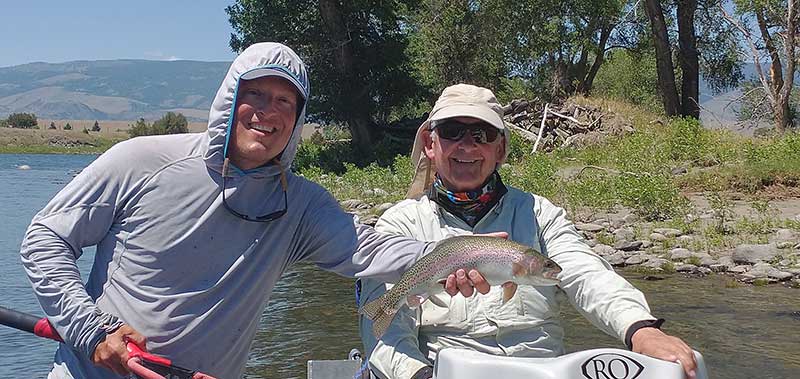Early Fall Float Trips
Posted on January 23rd, 2024
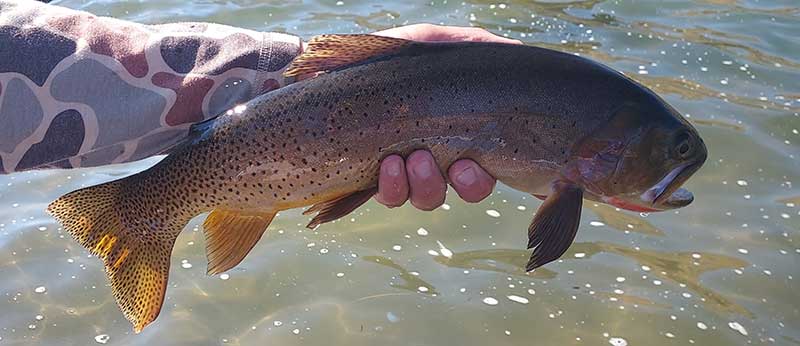
Early Fall Float Trips: Introduction
As air and water temperatures cool in late August or the first week of September, flows continue to drop and aquatic insect hatches turn back on. The next month or so, basically the month of September, offers the best match-the-hatch fishing of the season. Even large trout sometimes rise to tiny flies, and good fishing is still possible with terrestrial dry flies as well.
Early fall float trips are all about flexibility. If it’s warm and bright, we’ll want to fish hoppers and ants for numbers of free-rising cutthroats on the upper Yellowstone or for rainbows and browns on the lower Stillwater. If it’s cool and gray, it might be prime time to float the Yellowstone’s “town section” or east of Livingston and hope for a few monsters.
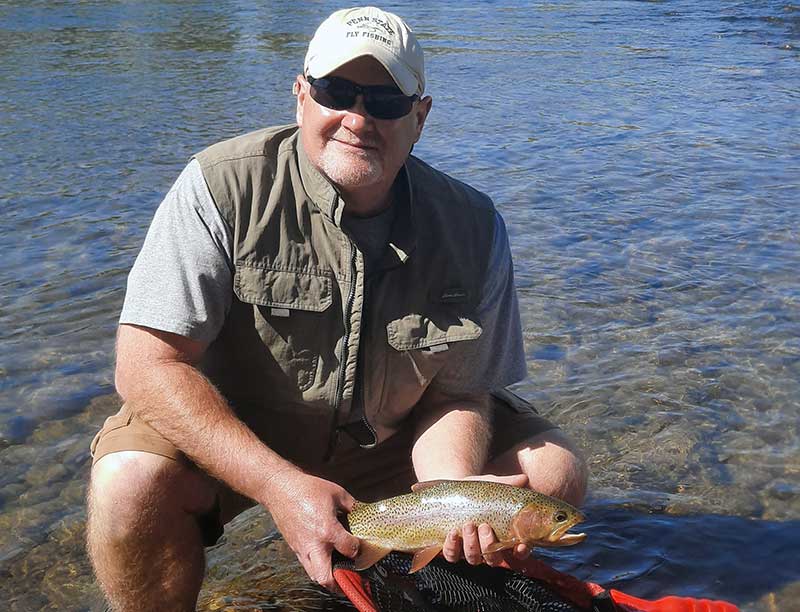
This is rapidly becoming the second most-popular period for float trips in the region, after early summer, and for good reason: the weather and water conditions are great, the fish are fat and healthy, and the crowds of general tourists have departed. There can still be quite a few fishing boats out on the water, but except on Labor Day Weekend there are far fewer than during the summer. The Stillwater River in particular is far less busy once September rolls around than earlier.
Here are a couple facts to keep in mind while you read this post:
- Early autumn is our favorite time to guide float trips on the Yellowstone and Stillwater Rivers (provided the Stillwater is high enough, sometimes it’s too low in the fall).
- While there aren’t any monster trout included on this page, every pictured fish here ate a dry fly. In fact, probably 80% of the trout we see on early fall float trips eat dries. Most of the rest eat emergers or small nymphs beneath these dries.
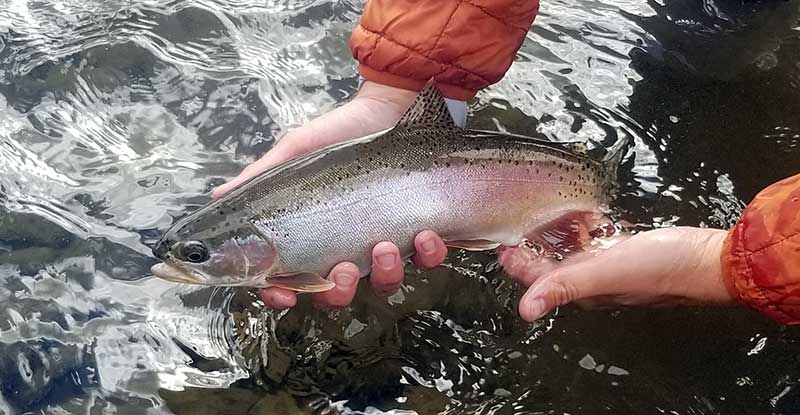
Early Fall Float Trips: Quick Facts
- Best Waters: The Yellowstone and Stillwater are the best options at this time, but the Lower Madison turns back on, as well.
- Three Top Reasons to Come in Early Autumn: 1.) The widest range of tactics of the season might work at this time, depending on weather and water conditions. 2.) Crowds of general tourists nosedive, and while there can still be quite a few anglers out on big-name rivers like the Yellowstone and Madison, there are far fewer than earlier in the year. Note that popular wade fisheries remain quite crowded through September. 3.) The best “match-the-hatch” fishing of the year typically occurs during this period.
- Three Top Reasons to Avoid Early Autumn: 1.) Fishing and weather/water conditions are less consistent than they are during the summer. 2.) The fish can be spooky. 3.) The fishing tends to “ebb and flow” much more at this time of year than earlier: it’s good for a while, then gets tough, or vice-versa.
- Perfect Clients: Clients who enjoy less-crowded conditions, come prepared for a wide range of weather and water conditions, and are willing to use the tactics the trout demand, whatever they may be. Early fall also offers some of the easiest beginner floating of the year, due to the aggressiveness of the mountain whitefish.
- What Early Autumn Does Best: Early fall offers great (if sometimes inconsistent) match-the-hatch fishing during Blue-winged Olive mayfly emergences. This is our favorite hatch of the year, which is why early fall is our favorite time to guide float trips.
Early Fall Float Trips: The Details
Early fall is just awesome. The fishing isn’t as consistent as it is in early summer, and the big grasshoppers don’t work as well as they do in late summer, but the mayfly hatches, the eagerly-rising trout that are in their best shape of the year, the falling crowds of competing anglers, and the fall colors more than make up for it.
This period runs from the first hints of colder weather in late August or early September when the late summer water temps drop sharply, until the first really cold weather hits sometime in early October. On warm days, this is still wet-wading season. On cool, rainy days, we wear waders and layer up and are very happy to do it.
With cold nights and often hot days, and a good chance of fall rains to freshen the rivers and make the mayflies hatch, the fishing is extremely varied at this time of year, both from day to day and even over the course of a given day. It’s often hard to predict what will happen, even with an accurate weather forecast. This makes early fall the most interesting time of year to fish the region, for good and ill.
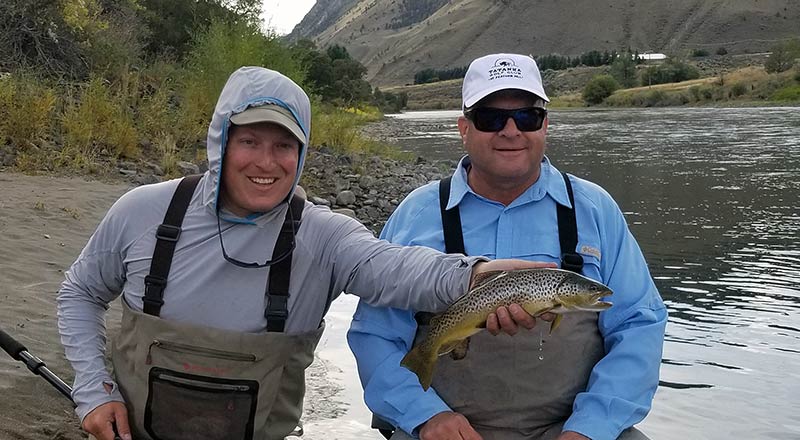
Tactics are all over the place in early fall, but we emphasize dry fly fishing on the Yellowstone River and dry-dropper on the Stillwater and Lower Madison. Streamers are a changeup technique for experienced anglers. We seldom resort to strike indicators and deep-nymphing in early fall except when guiding beginners.
First thing in the morning, we might throw streamers before switching to mayfly imitations, then swap the mayflies for grasshoppers during the warmest part of the day. Or the day might start off warm and sunny with hoppers hopping, then get cloudy and cool and prompt an immense afternoon mayfly hatch.
Regardless of the specific fly we tie on a client’s line, the prime mover of early fall fishing is mayfly emergences. Hoppers and ants still draw some action, but mayfly imitations both on the surface and fished as droppers under hoppers are what separate the great days from the decent ones.
There are several mayflies of note: Mahoganies, Tricos, Tan Drakes (sometimes called Drake Mackerals), and especially several species of Blue-winged Olives (BWO or Baetis). If the mayflies are hatching in profusion and the trout are going crazy, the fishing can be epic. If there’s at least a trickle of mayflies, the fishing will be solid. If it’s bright and sunny and the mayflies aren’t popping, it might be tough unless the hoppers are still hopping in profusion.
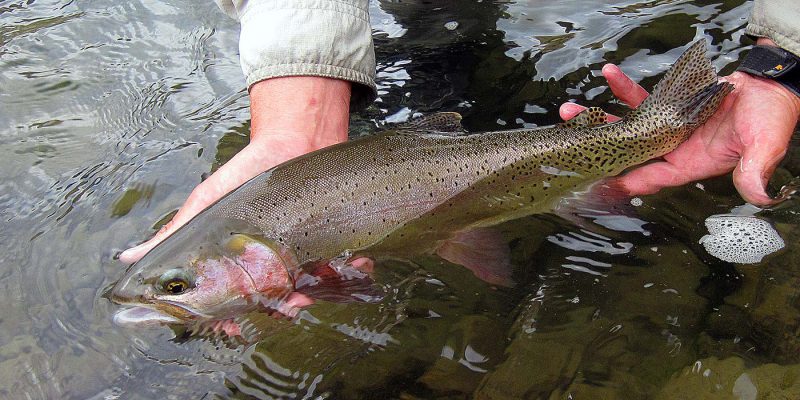
The epic dry fly days in our guiding year are more likely to happen at this time than at any other. This is also the period during the peak season when fishing is likely to be tough. We like to tell people that floating in July will usually mean a seven or eight out of ten in terms of angling quality. In early fall, it might well be a ten. It might also be a two. Sevens and eights are still more common, but the variability is higher in early autumn, and it’s important to accept that.
Variability is actually less common with beginners in early fall than with experienced anglers. Why? Whitefish. These under-appreciated gamefish are preparing for their spawn and therefore hyper-aggressive. This makes them great beginner options. We typically have beginners fish a nymph and a streamer under an indicator, and they’ll usually fill the boat with “whiteys” and get a few good trout, too. This opportunity makes early fall the best time for beginners to float.
Early fall is a good time for anglers who like to keep “banker’s hours.” Unless our clients want to throw streamers first thing in the morning for chances at one or two big fish, there’s seldom any reason to be on the water before 9:00 or 10:00. The fishing is usually good until around 5:00. We typically run either full-day trips that run a hair short or half-day trips that aim to get on the water around 10:30 or 11:00.
>>>>>>>>>>>>> Return to the Float Trips Page
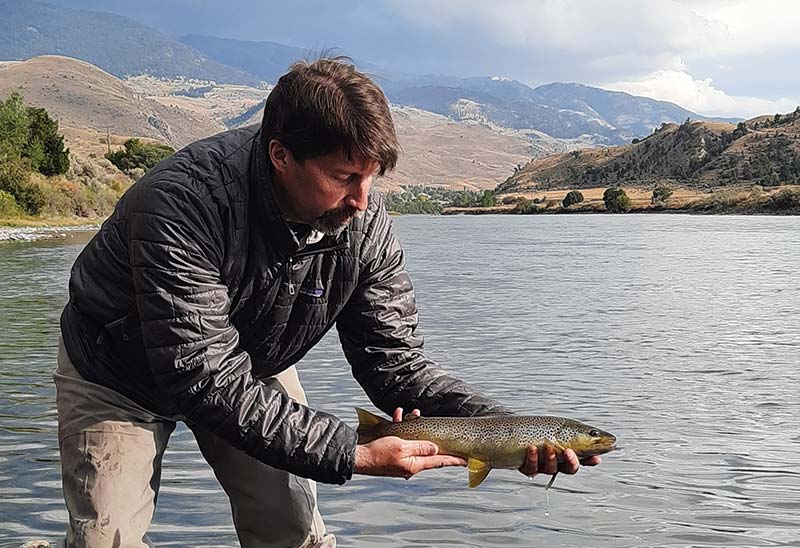
Late Summer Float Trips
Posted on January 23rd, 2024

Late summer is a prime period for larger trout on dry flies. This one (like most) ate a grasshopper imitation in fast water.
Late Summer Float Trips: Introduction
Late summer begins when rivers drop from the edges of the bushes and get slower. In the meantime, rivers turn crystal clear rather than green and aquatic insect hatches diminish, but terrestrial insects such as grasshoppers and ants begin blowing into the water in greater and greater numbers.
Some rivers get too low and in some cases too warm, but others become less challenging to fish, particularly in terms of the accuracy of casts required. While not quite so consistent as early summer, this period often offers easier fishing from a technical standpoint, and certainly offers slower-paced fishing, since flows are now low and slow enough to pick targets apart rather than blowing by.
For anglers who want to target larger fish on dry flies, as well as numbers on dries and small nymphs, this is a great period.

Late summer sees excellent cutthroat trout fishing with dry flies.
Late Summer Float Trips: Quick Facts
- Best Waters: The Yellowstone and Stillwater are by far the best rivers in our operations area at this time, and the two on which we do the vast majority of our guiding. The upper Missouri between Three Forks and Townsend can also be very good, though the quarry there are mostly carp rather than trout.
- Three Top Reasons to Come in Late Summer: 1.) The terrestrial dry fly fishing is great 2.) The fishing if not necessarily the catching is easier at this time than earlier in the summer, and 3.) Larger fish (on average) are more interested in dry flies than they were earlier.
- Three Top Reasons to Avoid Late Summer: 1.) During dry years, late summer is when we have fishing restrictions due to warm water temperatures and the greatest potential for forest fires, 2.) Crowds are still high, and 3.) “Match-the-hatch” fishing is limited.
- Perfect Clients: Clients who love dry fly fishing, but prefer the slightly slower pace the lower water present during this period gives to trips.
- What Late Summer Does Best: Late summer generally produces excellent dry/dropper fishing for fish that average a bit bigger than they do earlier in the summer, albeit with less consistency of weather and water conditions and therefore less consistent fishing.
Late Summer Float Trips: The Details
As the rivers drop, clear, and warm, and as aquatic insect hatches begin to decline, conditions transition into what we consider “late summer.” This is a gradual change and isn’t clear-cut. This period begins sometime in late July or early August, depending on the previous winter’s snowpack, how this snow melts, and summer weather.
The fishing during this period is similar to early summer, but it’s a little less frenetic, a little easier for beginners in terms of technique, and the fish start getting a touch spookier. While the fishing is a little harder overall than it is earlier in the summer, it remains quite good unless water temperatures get too high, and the slower pace of the fishing coupled with the better chances of big fish on dry flies make this another favorite period for many of our clients, and many visiting anglers in general.

There are two key drivers to the float fishing at this time: terrestrial insects and water conditions.
The terrestrial insects, mostly meaning ants and grasshoppers, are usually the most important dry flies in late summer and are a lot of fun for most anglers to fish. The big numbers of fish usually come on ants (or occasionally small aquatic insects or nymphs), while the big trout tend to come on the larger grasshoppers.
The fish aren’t quite as eager to wallop dries at this time as they are a few weeks earlier, so anglers need to up their game a bit for success, but when anglers get it right, this is often the time that produces the most action on dries, simply because the fishing is a bit slower-paced than earlier in the summer and so it’s easier to hit more of the holding water.
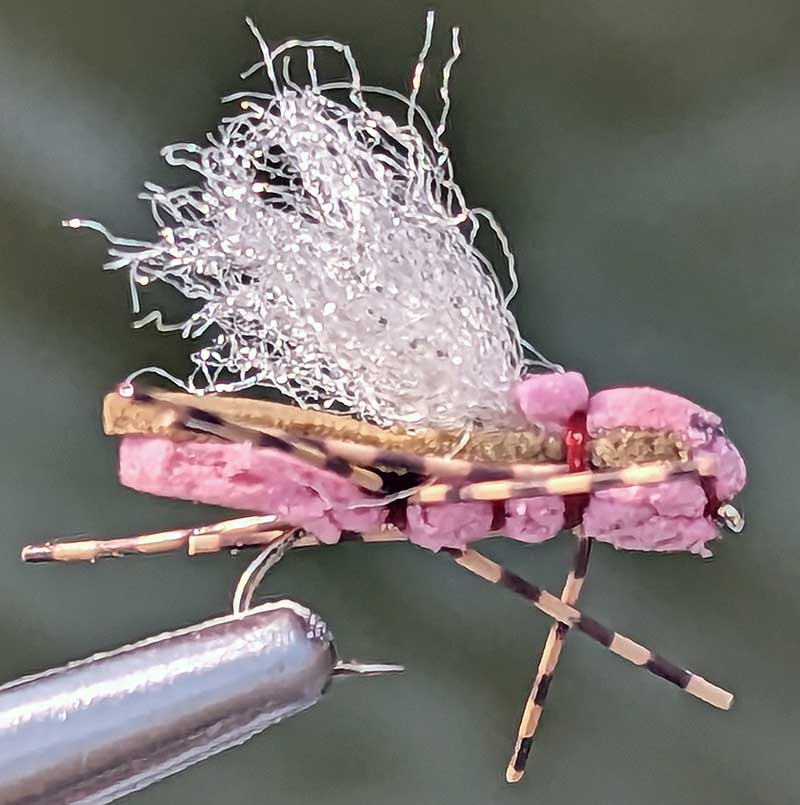
Grasshoppers often get chewed apart in late summer. Yes, pink is often THE color.
The reason the fishing has a slower pace during this period is streamflow. All rivers drop through the summer. The only question is how much they drop. If they drop too much, especially if the weather is hot and dry, they get too warm. Sometimes this means the afternoon fishing is poor. Sometimes this means that rivers are closed after 2:00PM. These are called “hoot owl” closures, and they’re getting more and more common due to global warming.
Certain rivers within our operations area are now almost always closed for part of late summer, chief among them the lower Madison and the Jefferson, but these are poor choices anyway. The real problems happen when water temperatures begin spiking over 70 degrees on the Yellowstone or Stillwater. It’s unusual for these rivers to endure hoot owl restrictions, but low water and high temperatures do lead to some tough fishing, usually in early-mid August, particularly in shallow areas of Paradise Valley and east of Livingston on the Yellowstone or after 2:00PM on the lower Stillwater.
Because of the potential for water temperature issues in mid-late afternoon, visitors looking to come in late summer must understand the risk of having to start early or cut trips short if temps are too warm. Also note that the Boulder River is never high enough for float trips during this period. This is a tiny river, so once it gets low, even a kayak would have trouble getting down it, much less a fishing raft. For similar fishing as the Boulder provides, the Stillwater River is very good unless it’s too warm.
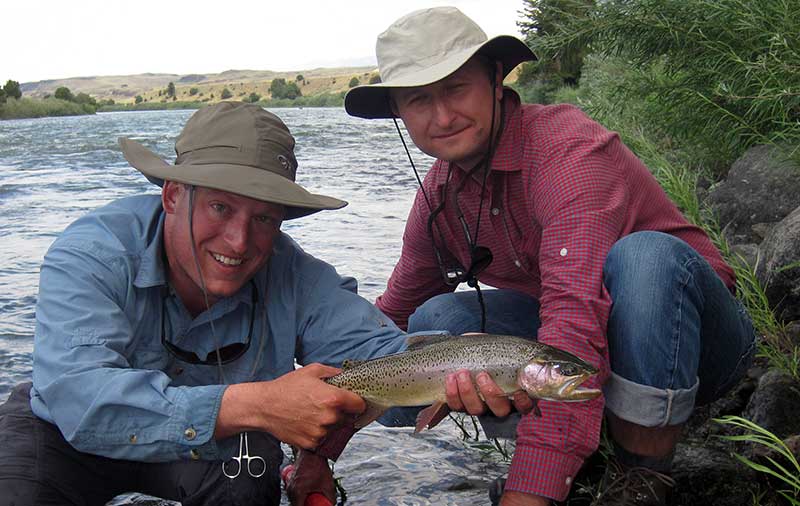
If water temperatures are okay, as they usually are on our preferred rivers (the Yellowstone and Stillwater), fishing techniques resemble those of early summer: dries, dry/dropper, and “drifting and dragging” streamers. The flies themselves change a bit, since as noted the terrestrials are the hot bugs most of the time. The fish begin moving off the banks somewhat, so we seldom “bang banks” in late summer like we do earlier. Other than these minor changes, anglers who like the sound of early summer will like late summer well, too.
Beginners will like late summer better. Since casts need not be as accurate and the currents are slower, beginners typically do better on late summer river floats than they do in early summer.
Full-day and half-day floats are available at this time. Because of the potential for water temperature problems, it’s conceivable we might need to meet for full-day trips as early as 5:00AM, though this is rare. Unlike early summer, there’s usually little point for half-day trips meeting late in the afternoon. In fact, we’ll usually run half-day trips in the mornings during this period unless we’re in the midst of a cool spell.
>>>>>>>>>>>>>>>> Return to Float Trips Page
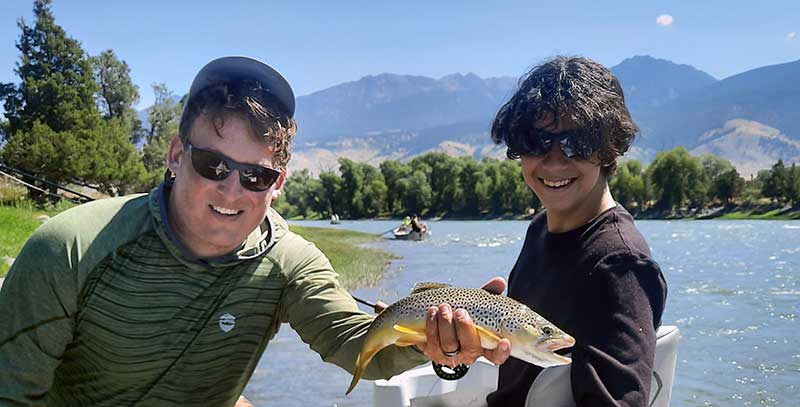
Early Summer Float Trips
Posted on January 23rd, 2024
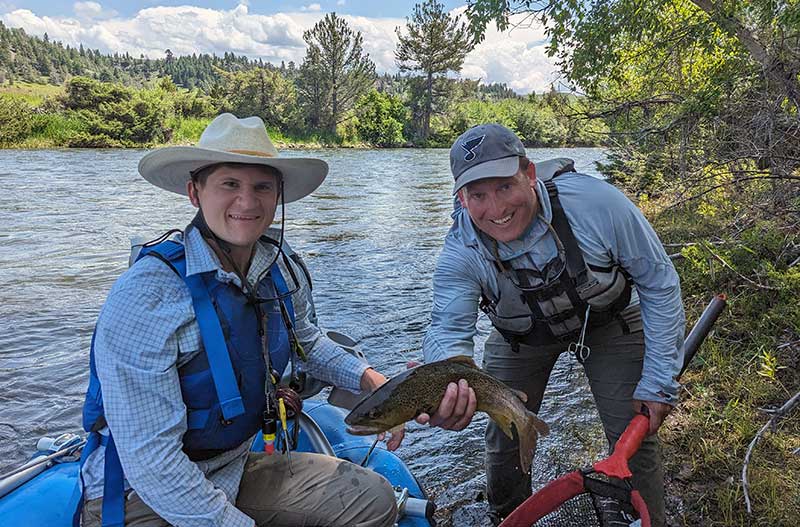
The Boulder River is a prime destination in early summer.
Early Summer Float Trips: Introduction and Quick Facts
Between the middle of June and early July, runoff recedes and the high season begins. The next month or so finds rivers still running high and fast, but clear. Insect hatches are abundant, including the famous Salmonfly, and the trout are eager to eat after a month or more of high, muddy water.
This time of year typically offers the best caddis, stonefly, and attractor dry fly fishing of the season, especially for experienced clients able to hit small targets along the bank while the boat is jetting downriver in the high flows. This period is also a decent time for big fish on floats, especially for clients interested in fishing big nymphs and streamers.
Since the fishing and weather and water conditions are great at this time, it’s little wonder that this is the absolute peak season for float fishing in the region.
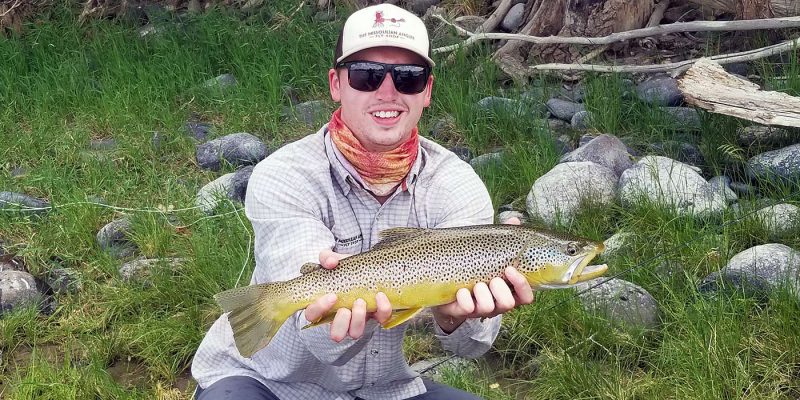
Early summer is an excellent time to target larger brown trout on big nymphs and dead-drifted streamer flies.
- Best Waters: The Yellowstone and Boulder are our favorite float rivers at this time, and with these nearby fisheries all in their prime, we seldom run float trips elsewhere in early summer.
- Three Top Reasons to Come in Early Summer: 1.) This is peak large dry fly time on all rivers, 2.) This time of year offers the most consistent float fishing, if not always the best fishing, and 3.) this period offers the most consistent weather and water conditions of the year.
- Three Top Reasons to Avoid Early Summer: 1.) This is the most crowded time of year, 2.) The fishing is very fast-paced and requires accurate casting, which may be a plus or a minus depending on perspective, and 3.) Late summer and early fall are better for large fish on dry flies, though early summer is better on subsurface flies.
- Perfect Clients: Clients with at least some fly fishing experience who enjoy fast-paced fishing and like to rack up the numbers rather than try to sight-fish or otherwise “hunt” a few big fish (though a few big fish are possible in early summer). Really, early summer is great for all clients except those who want a lazy day and those who can’t stand to see any other anglers on the water.
- What Early Summer Does Best: Early summer provides the best attractor, caddis, and stonefly dry fly and dry-dropper fishing of the season; it’s also a good time for big trout using a few techniques and in a few places, though not generally on dries.
Early Summer Float Trips: The Fishing
Sometime between the middle of June (following dry winters) and early July (following wet winters), freestone rivers begin dropping out of the spring melt. This happens earlier on the Jefferson, Upper Madison, and Boulder, later on the Yellowstone and the lower end of the Stillwater. Just as the water gets a foot or eighteen inches of visibility, usually while the rivers are still up in the bushes and the current is raging, the fish and trout stream insects on which the fish feed go bananas and probably the most consistent fishing of the year begins.
The Yellowstone, Boulder, and Stillwater are our favorite haunts at this time. The upper Madison is also good. In fact, every river in the region is good at least at the beginning of early summer, though some get too warm by mid-July.
All rivers see their most-varied aquatic insect hatches of the year at this time. Many rivers see brief hatches of the fabled Salmonfly (giant black stonefly) for a week or so, but all possess good populations of smaller stoneflies and several species of caddisflies. Some mayflies also hatch on float rivers, especially in slow areas and on the Missouri. This smorgasboard means that attractor patterns are often better than imitations of one specific insect at this time. With so much to choose from, the fish often don’t get particular for any one thing.
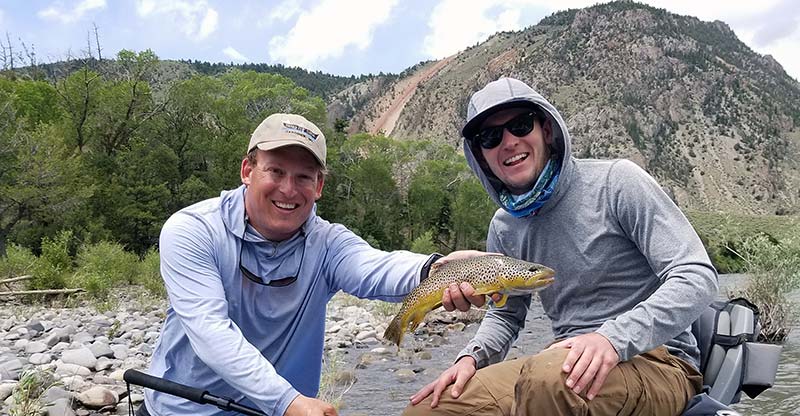
River flows remain high through early summer, often at least grazing the willow bushes and grass throughout this period. Heavy aquatic insect hatches coupled with high flows mean the fish are pushed close to the banks in search of food and to stay out of the current, at least the fish looking to feed on the surface rather than on nymphs and baitfish hiding in the rocks. Therefore, much of the fishing involves making short, accurate casts to shallow water, within a few feet of shore, or right behind midriver rocks that break the surface and therefore cushion the current.
Overall, we have three preferred techniques while guiding at this time. By far our favorite when the fish are cooperative is to fish only dry flies. These might match the various insects that are hatching, large and small, but more often we like to fish various attractors, especially a couple “caddis-like” patterns our outfitter personally developed. Whatever the dry fly, not only is it more fun to see fish rise, but it’s also easier to avoid hanging up in the bushes or the shallow rocks when the fly (or flies) are on the surface and visible.
If the fish aren’t rising well but are doing so occasionally, we will hang a nymph or emerger under a dry. Usually this is a small attractor nymph, a big stonefly, or a caddis pupa.
Our final preferred technique at this time is “drifting and dragging” streamer and nymph combinations. This is indicator nymphing using a streamer pattern with a nymph as a “second chance” fly. Of these three techniques, the last produces the largest fish, while in the right conditions the “dry or die” method produces the most fish.
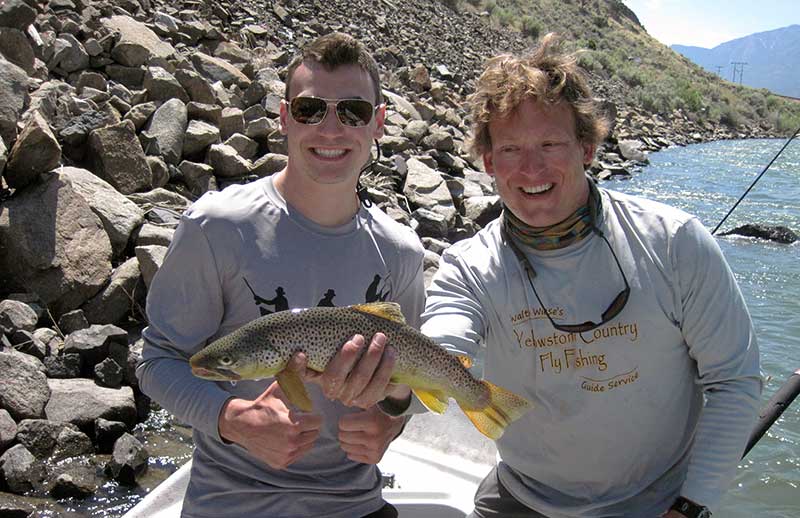
Early summer fishing gets two thumbs up.
This is a wonderful period for experienced anglers who like fast-paced dry fly fishing. The fishing is fast-paced because of the current speed. The slow spots where the trout hold are small, and no matter how hard the guide rows back upstream, most of the time anglers get only one crack at each spot. This is why early summer can be hard for total beginners. Except when floating a few gentle stretches of the Yellowstone within Paradise Valley, the current speed, the small targets, and the many hangups (bushes in the water and rocks) can be frustrating for rookies. That said, rookies who understand things will be fast and furious can still do well, especially when we’re sticking to nymphs. Some of the largest fish that we saw in 2020 were caught by beginner or novice clients in early summer.
Because of the high water that makes wading difficult and also pushes the fish to the same places we’d be standing when wade-fishing, almost all fishing at this time is done from the boat. There are a few areas we might pull into and drop anchor to hit a little harder, and many more we might back into for a few casts, but otherwise almost all fishing in early summer is done while the boat is moving.
>>>>>>>>>>>>>>>>>> Return to Float Trips Page
